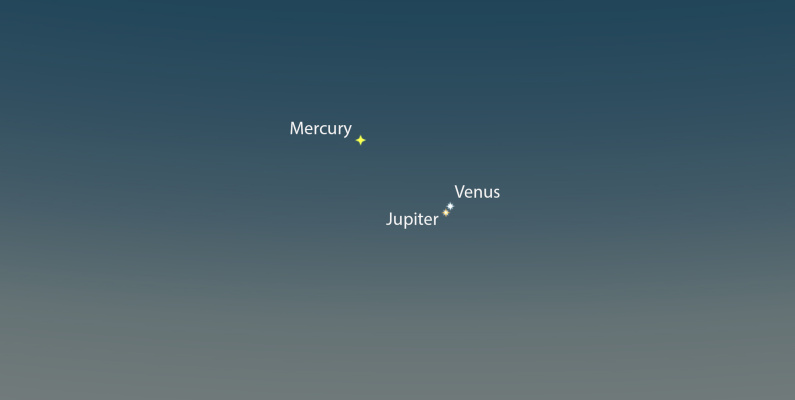
I’m keeping my fingers crossed for clear skies this weekend. As darkness falls, there’s going to be an absolutely spectacular and very close approach between Venus and Jupiter in the western sky. If the weather gods cooperate, this should provide an inspirational sunset sight for stargazers across Otago. And if this isn’t enough to fire up your astronomical enthusiasm, I’m sure when you learn that the planet Mercury will also be visible less than five degrees from the prominent planetary pairing, you’d have to have a heart of stone not to want to wrap up warmly and head outside to enjoy the show.
In recent weeks Venus, Mercury and Jupiter have been slowly gathering in the western sky after sunset. However, this week, the celestial excitement will reach fever pitch as Venus and Jupiter come closest together.
On Saturday, Jupiter will be visible less than a degree (the angle subtended by your index finger at arm’s length) above Venus, which will be the brighter of the two planets. Mercury will be dimmer, but still easy to spot, roughly five degrees (or three middle fingers held at arm’s length) above and to the left of Venus and Jupiter.

As this chart shows, the close approach (which astronomers call a conjunction) is best viewed on Sunday night (28 August) when Venus and Jupiter will be less than half a degree apart after sunset, with Venus slightly higher in the sky than Jupiter. If you point a low-power telescope at the pairing, both planets should easily fit into the same field of view, affording an excellent opportunity to compare them.

Better still, Jupiter’s bright major moons should make for a truly memorable view. As show on this map, Io, Europa, Ganymede and Callisto should form a nice line between the two planets.
If you don’t have a telescope, but live near Dunedin, remember that the Dunedin Astronomical Society’s Beverley-Begg Observatory in Robin Hood Park will be open on Sunday night if you want to enjoy the view.
